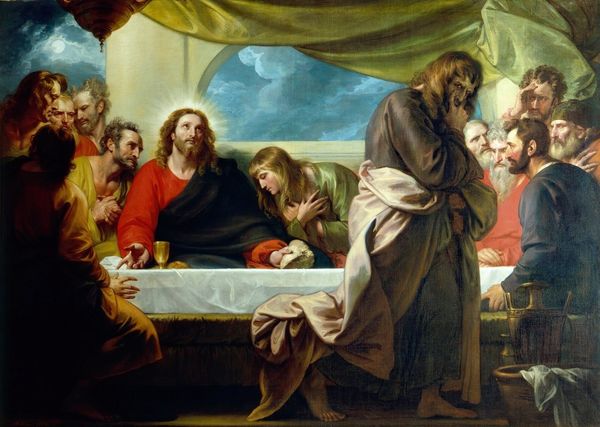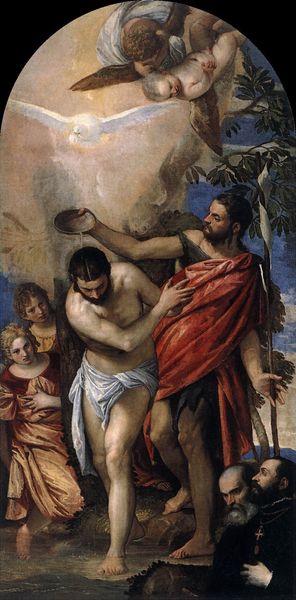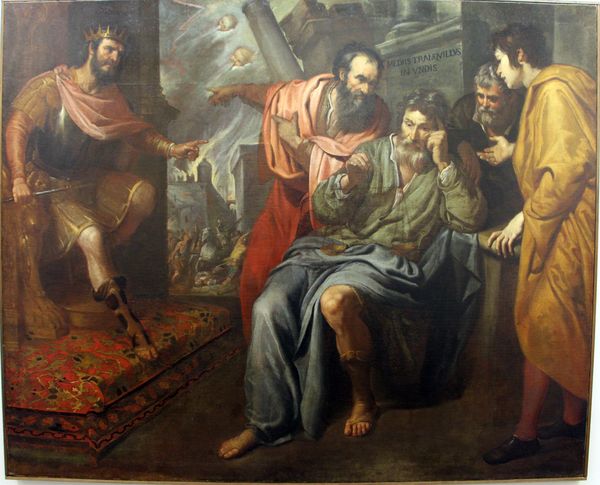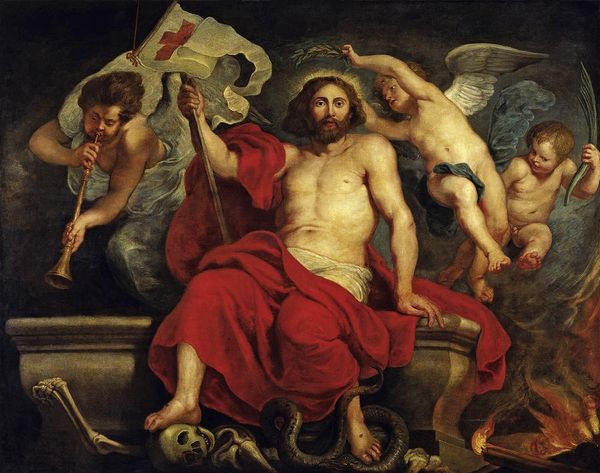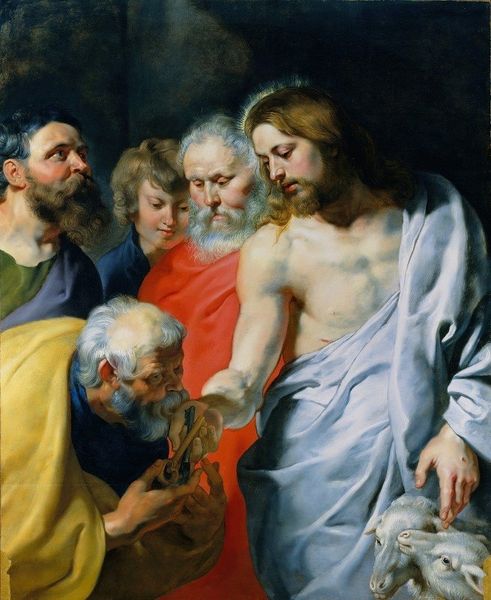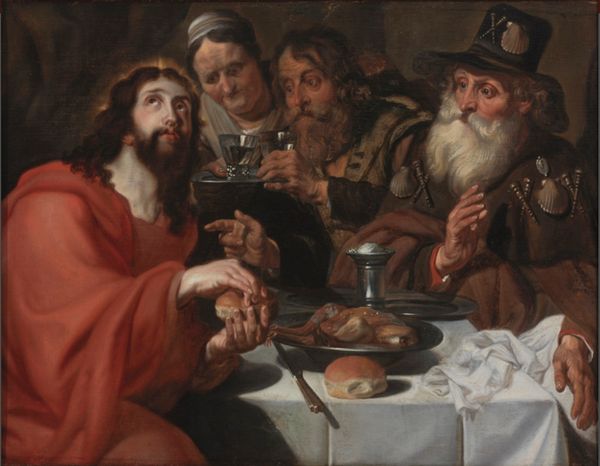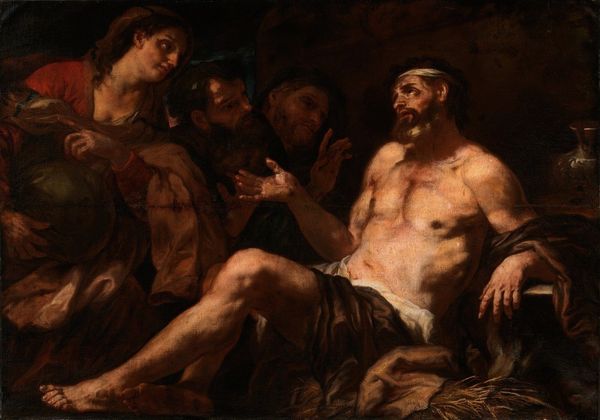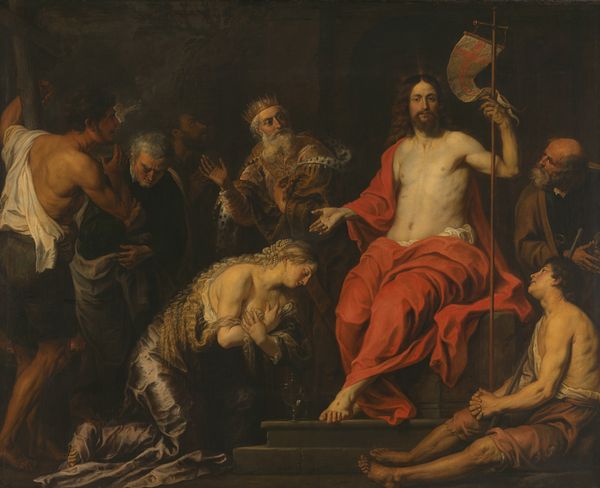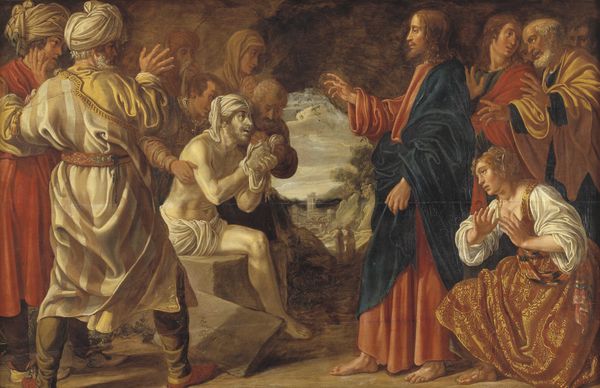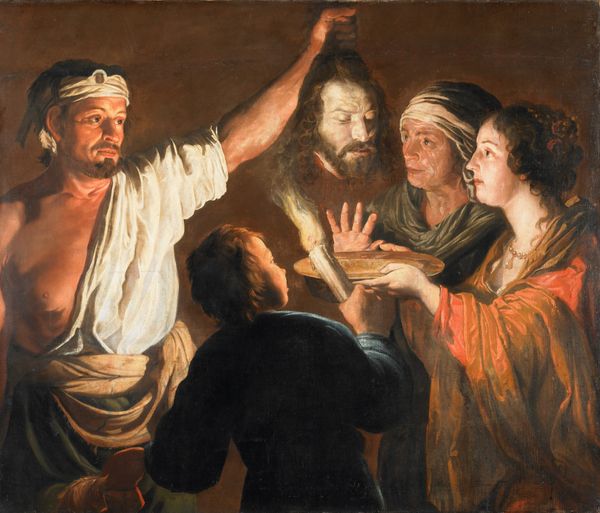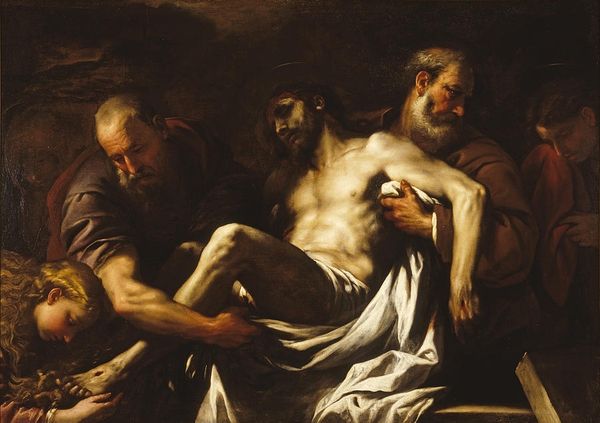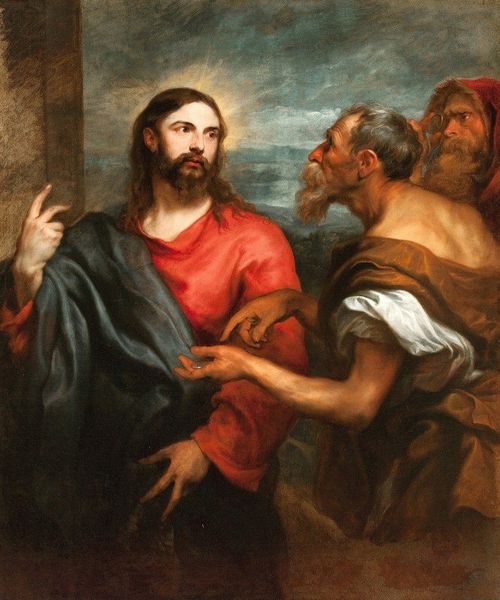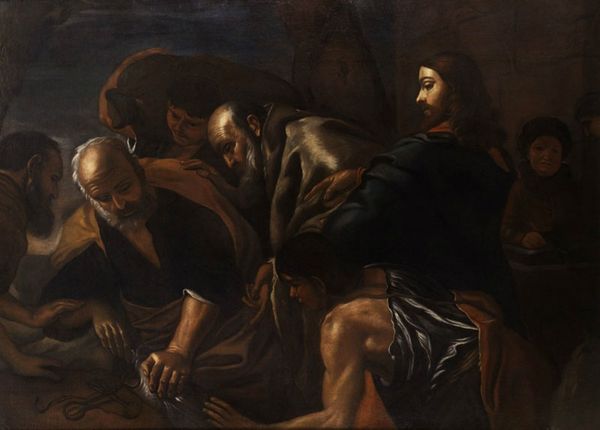
oil-paint
#
baroque
#
oil-paint
#
figuration
#
oil painting
#
mythology
#
genre-painting
#
history-painting
Copyright: Public domain
Jan Cossiers painted Jupiter and Lycaon using oil on canvas, a common medium for dramatic storytelling in the 17th century. Oil paint allows for a rich layering of colors, essential here to create the dark, moody atmosphere and the stark contrast between light and shadow. Look closely at the way Cossiers has rendered the textures: the rough fur of Lycaon’s transforming face, the sheen on the metal plate, and the soft folds of Jupiter’s robe. These effects were achieved through careful brushwork, building up thin glazes of paint to create depth and realism. The labor involved in producing oil paintings during this era was considerable, from grinding pigments to preparing the canvas. Cossiers was part of a workshop system, where assistants often helped with the less skilled tasks, allowing the master to focus on the final, expressive touches. The subject matter itself reflects the social hierarchy of the time, with the gods holding absolute power over mortals. But Cossiers's emphasis on the visceral, transformative moment also hints at the instability and potential for change within that order.
Comments
No comments
Be the first to comment and join the conversation on the ultimate creative platform.
